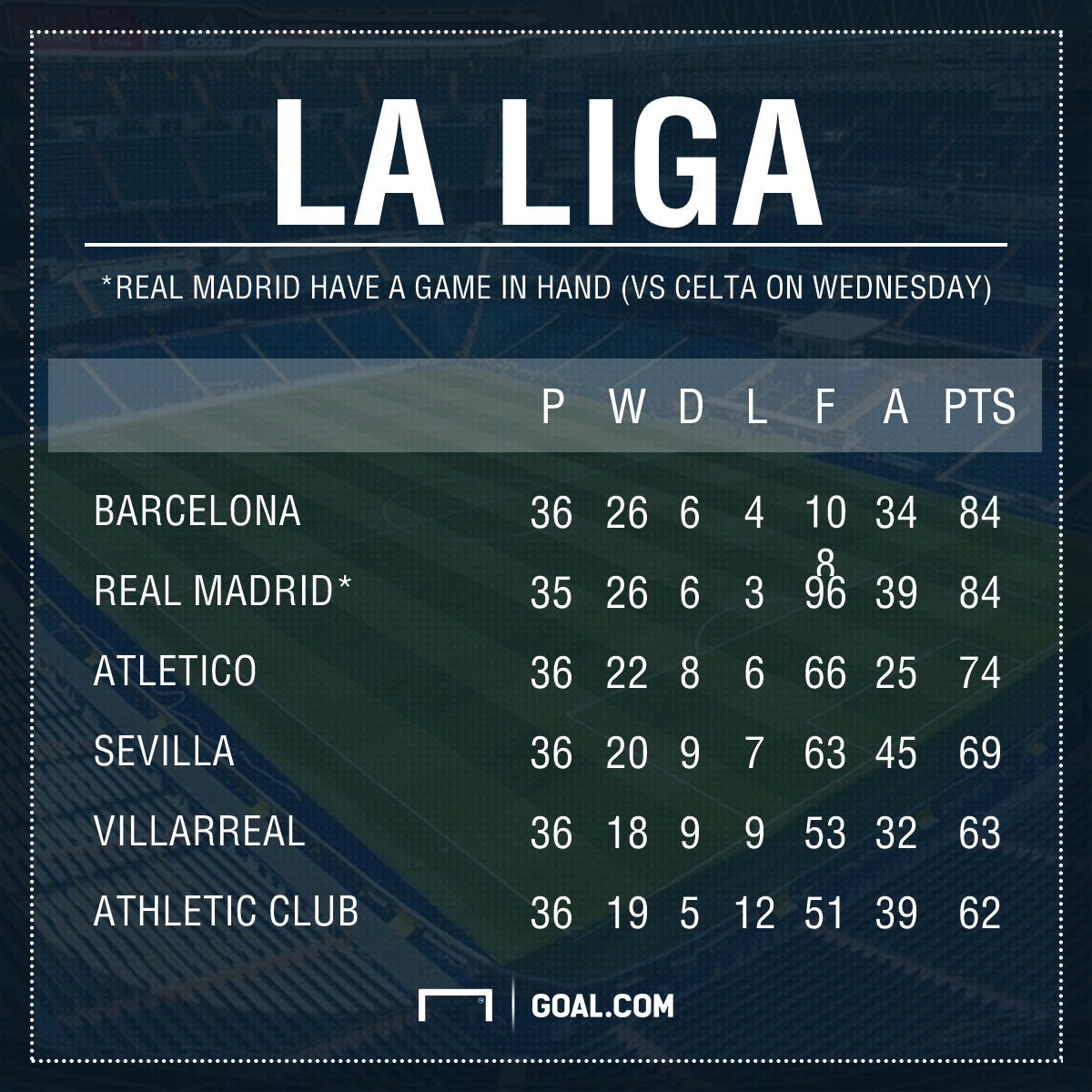La Liga Standings: The Ultimate Guide To Spain's Football League
La Liga, officially recognized as La Liga Santander, ranks among the world's most prestigious football leagues, showcasing exceptional talent and captivating millions of fans across the globe. Established in 1929, this Spanish football league boasts a storied history and continues to set the standard for excellence in the sport. The term "La Liga Standings" refers to the league's ranking system, which dynamically reflects each team's performance throughout the season. As we explore this detailed guide, we will delve into not only the current standings but also the intricate elements that make La Liga a truly exceptional and thrilling competition.
Every season, the league's ranking system becomes the central focus for fans, analysts, and clubs alike, tracking the progress of 20 teams vying for the prestigious championship title. The standings represent far more than mere numbers; they tell compelling stories of triumph, heartbreak, and the relentless pursuit of excellence. From Barcelona's legendary dominance and Real Madrid's consistent excellence to the rise of formidable contenders like Atlético Madrid, the standings capture the ever-evolving landscape of Spanish football.
Understanding "La Liga Standings" extends beyond simple rankings; it provides profound insights into competitive balance, financial implications, and sporting achievements that define contemporary football. As we explore this subject, we will uncover how the standings influence everything from European qualification spots to relegation battles, making them an essential component of the football ecosystem. This guide will serve as your comprehensive resource for understanding every aspect of La Liga's rankings and their significance in the world of sports.
- The Crucial Role Of Pennsylvanias Secretary Of State In Shaping State Governance
- Experience The Heart Of St Louis At Hyatt St Louis
Table of Contents
- What Makes La Liga Standings Unique?
- Historical Evolution of La Liga Standings
- How Do La Liga Standings Impact European Qualification?
- Key Factors Influencing La Liga Standings
- Can La Liga Standings Predict Season Outcomes?
- Statistical Analysis of La Liga Standings
- What Are the Biggest Surprises in La Liga Standings History?
- Future Trends in La Liga Standings
What Makes La Liga Standings Unique?
La Liga's ranking system distinguishes itself through several remarkable attributes that set it apart from other major football leagues worldwide. The Spanish league's structure, featuring a 20-team format with home and away matches, creates a comprehensive 38-game season that allows for a thorough evaluation of team performance. Unlike some leagues with pronounced financial disparities, La Liga has implemented measures to promote competitive balance while preserving its elite status.
One of the most striking features of "La Liga Standings" is its historical dominance by two powerhouses: Real Madrid and Barcelona. This duopoly has fostered intense rivalries and consistently high-quality football, yet recent seasons have seen the emergence of Atlético Madrid as a genuine third force. The standings often reflect this competitive dynamic, with these three clubs frequently occupying the top positions, though the gap between them and the rest has narrowed in recent years.
What truly sets La Liga's rankings apart is its emphasis on technical skill and tactical sophistication. The standings often highlight teams that prioritize ball possession and technical proficiency, leading to some of the most aesthetically pleasing football in the world. This approach is evident in the league's consistently high average goals per game and possession statistics. Additionally, La Liga's rankings serve as a critical metric for European qualification, with the top four teams securing Champions League spots, while fifth and sixth place teams qualify for the Europa League and Conference League, respectively.
- Discover The Vibrant World Of Beer City Music Hall
- The Biden Family A Legacy Of Service Resilience And Compassion
Historical Evolution of La Liga Standings
The evolution of "La Liga Standings" mirrors the broader development of Spanish football and its global influence. When the league began in 1929, the rankings featured only ten teams, with Barcelona emerging as the first champions. Over the decades, the league expanded to its current 20-team format, with the rankings becoming increasingly sophisticated in their presentation and significance. The 1950s and 1960s marked the beginning of Real Madrid's dominance, as they claimed multiple consecutive titles, setting records that still influence the rankings' historical context today.
The late 1980s and 1990s witnessed a significant shift in the league's competitive landscape, with the emergence of new powerhouses and the implementation of the three-points-for-a-win system in 1995. This change dramatically affected how teams approached matches and how the rankings reflected season progress. The introduction of television rights and increased commercialization in the 2000s further transformed the standings, as financial power began playing a more crucial role in determining ranking positions.
Recent years have seen remarkable developments in how "La Liga Standings" are calculated and presented. The implementation of advanced analytics, VAR technology, and more sophisticated tie-breaking procedures has made the rankings more accurate and comprehensive. The rankings now incorporate various performance metrics beyond just points, including goal difference, head-to-head results, and away goals, providing a more nuanced picture of team performance throughout the season.
How Do La Liga Standings Impact European Qualification?
The position of teams in "La Liga Standings" directly determines their participation in European competitions, making it one of the most critical aspects of the season. The top four teams automatically qualify for the UEFA Champions League, while fifth place secures a spot in the Europa League. Sixth place typically qualifies for the Conference League, though this can vary based on cup competition results. This qualification structure creates intense competition throughout the rankings, as even mid-table teams fight for European spots.
Financial Aspects of Team Performance
The financial implications of ranking position are substantial, with Champions League qualification worth hundreds of millions of euros through broadcasting rights, prize money, and commercial opportunities. This financial incentive creates a significant gap between top-ranking teams and those in the lower half. The rankings effectively serve as a financial barometer for clubs, influencing their ability to attract top talent and invest in infrastructure.
Tactical Innovations in Modern La Liga
Recent seasons have witnessed fascinating tactical developments that directly impact "La Liga Standings." Teams have increasingly adopted flexible formations and sophisticated pressing systems, making the rankings a reflection of both technical skill and tactical acumen. The emergence of data analytics has also transformed how managers approach matches, with ranking positions often influenced by advanced statistical analysis and performance metrics.
Can La Liga Standings Predict Season Outcomes?
While "La Liga Standings" provide valuable insights into team performance, predicting season outcomes remains a complex challenge. Historical data suggests that teams in the top three positions after 20 games often maintain their positions until the end of the season, but dramatic turnarounds have occurred. For instance, the 2013-2014 season saw Atlético Madrid break the traditional duopoly of Real Madrid and Barcelona, demonstrating that ranking positions can be deceptive.
Statistical Analysis of La Liga Standings
A detailed examination of "La Liga Standings" statistics reveals fascinating patterns and trends. The following table summarizes key metrics from the past five seasons:
| Season | Champions | Top Scorer | Average Goals/Game | Biggest Upset |
|---|---|---|---|---|
| 2018-2019 | Barcelona | Messi (36) | 2.68 | Real Madrid 0-1 Real Valladolid |
| 2019-2020 | Real Madrid | Messi (25) | 2.53 | Barcelona 0-1 Cádiz |
| 2020-2021 | Atlético Madrid | Messi (30) | 2.64 | Real Madrid 0-1 Levante |
| 2021-2022 | Real Madrid | Benzema (27) | 2.71 | Barcelona 0-1 Rayo Vallecano |
| 2022-2023 | Barcelona | Robert Lewandowski (19) | 2.69 | Real Madrid 0-4 Barcelona |
This statistical overview demonstrates how "La Liga Standings" reflect broader trends in team performance and individual excellence. The rankings also highlight the increasing competitiveness of the league, with more teams capable of upsetting traditional powerhouses.
What Are the Biggest Surprises in La Liga Standings History?
Throughout its history, "La Liga Standings" have witnessed numerous shocking developments that have defied expectations. Perhaps the most remarkable surprise came in the 1999-2000 season when Deportivo La Coruña, traditionally considered a mid-table team, claimed the championship title. Their unexpected rise to the top of the rankings demonstrated how financial prudence and tactical innovation could overcome the financial muscle of larger clubs.
Future Trends in La Liga Standings
Looking ahead, several emerging trends could reshape "La Liga Standings" in the coming years. The implementation of stricter financial fair play regulations, coupled with increased investment in youth development, suggests that the traditional powerhouses may face stronger competition from emerging teams. The rise of data analytics and sports science is also likely to influence ranking positions, as clubs increasingly rely on sophisticated performance metrics to gain competitive advantages.
Frequently Asked Questions
How Often Are La Liga Standings Updated?
The rankings are updated after every matchday, typically occurring twice a week during the season. This frequent updating ensures that fans and analysts have the most current information about team standings and performance.
What Happens in Case of a Tie in La Liga Standings?
In the event of equal points, "La Liga Standings" use several tie-breaking criteria: head-to-head results, goal difference, goals scored, and away goals. These criteria help determine final positions and potential qualification spots for European competitions.
How Do La Liga Standings Compare to Other Major Leagues?
While similar in structure to other top European leagues, La Liga's rankings often showcase higher technical quality and more pronounced tactical sophistication. The league's emphasis on ball possession and technical skill sets it apart from more physically-oriented competitions like the English Premier League.
In conclusion, "La Liga Standings" represent far more than just a simple ranking system; they encapsulate the essence of Spanish football and its global influence. From their historical evolution to their impact on European qualification and financial implications, the league rankings serve as a comprehensive barometer of team performance and competitive balance. As La Liga continues to evolve, its standings will remain a crucial reference point for understanding the dynamics of modern football and predicting future trends in the sport.
For more detailed information about La Liga's official regulations and procedures, you can visit their official website.

La Liga Table 2017 Matttroy

La Liga Table 2024/25 Britni Savina